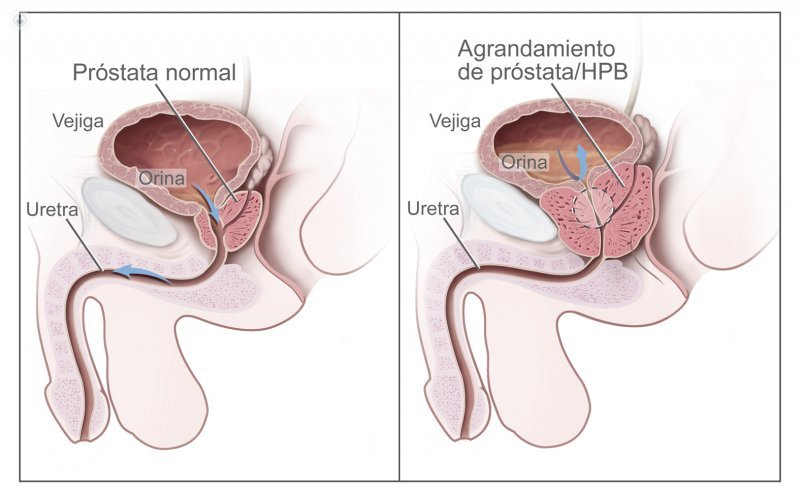Symptoms of benign prostatic hypertrophy for early diagnosis
Written by:Benign prostatic hypertrophy (BPH) is an enlargement of the prostate due to hormonal changes. Some symptoms occur during emptying or are obstructive, others are manifested as the bladder fills and are called filling or irritative symptoms and there are also post void.

Prostate: what it is and how it works
The prostate gland is an exclusive men that is located immediately below the bladder, surrounding the urethra. It is responsible for producing the liquid containing the semen, and is formed of smooth muscles that help expel during ejaculation. A healthy prostate is about the size of a large walnut, with a volume of approximately 15 to 25 milliliters.
Benign Prostatic Hypertrophy: symptoms
This gland, as experts say in Urology , undergoes microscopic changes known as benign prostatic hyperplasia (BPH) due to the hormonal influence of advancing years. This may cause BPH Benign prostatic growth (CPB). This growth can block the urinary flow, because it squeezes the urethra, a condition known as benign prostatic obstruction (BPO), which appears in about half of men.
Symptoms due to this urethral obstruction, which they are usually known as Urinary Tract Symptoms Inferior (LUTs) can be caused by benign prostate growth, but can also be caused by other conditions affecting the urinary system, such as urethral stricture or prostate cancer, etc.. It consists of three symptom clusters:
1. or obstructive voiding symptoms. They are those produced directly by the blockage: Delayed start of urination, weak stream, shortness urination, prolonged urination, chronic or acute urinary retention (in advanced cases).2. Symptoms filling or irritative. They are those derived from the impact and changes in the bladder obstruction: the need to urinate more often than usual, having to get up at night to urinate (nocturia), sudden need to urinate with difficulty postponing urination ( voiding) accompanied, or not, urgent urinary incontinence.3. Post-void Symptoms: feeling that the bladder has not emptied completely, post void dribbling.
Occasionally they may also appear less common symptoms associated with the complications of an evolved obstruction, and thus appear hematuria, abrupt cessation of urine flow (by the presence of stones in the urinary bladder), urinary burning, extreme urinary frequency associated with great urgency, fever ( due to infection), nausea and vomiting, drowsiness, malaise (obstructive renal failure).
Benign Prostatic Hypertrophy: Diagnosis
To diagnose this condition is necessary to develop a medical history and perform a physical examination. Following these tests urine or blood, imaging of the bladder and prostate, and any others deemed necessary can be made.



